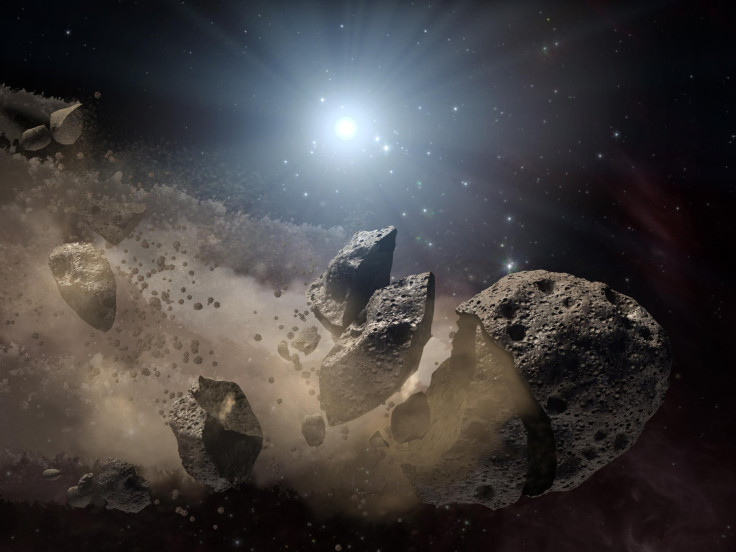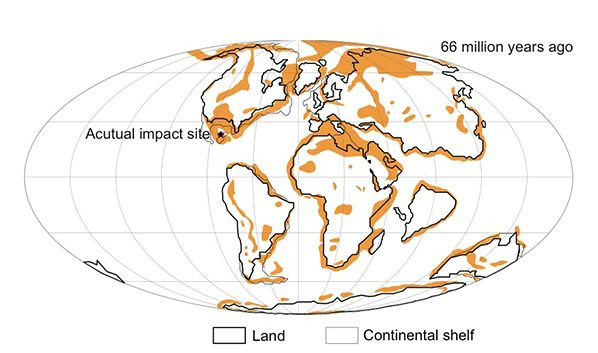Dinosaur Extinction And Asteroid Impact, Classic Case Of Wrong Place, Wrong Time

It seems highly unlikely dinosaurs ever used the phrase “wrong place, wrong time” but if they could have used it, that is how they might have described the mass extinction event that wiped out all their non-avian varieties. According to new research, the largest animals to ever have lived on Earth could have still been alive today if the asteroid impact that led to their extinction had been almost anywhere else on Earth other than its actual site in what is present-day Mexico.
The Chicxulub Impactor, named after its impact site, came hurtling from space and through Earth’s atmosphere about 66 million years ago and when it smashed into the ground, it created a crater over 180 kilometers (110 miles) wide and 20 kilometers deep. Energy from the impact threw molten rocks into the atmosphere which formed soot in the stratosphere. That soot caused rapid global climate change led to the Cretaceous-Paleogene extinction event killing about 75 percent of all animal and plant species alive at the time.
However, a study by two Japanese researchers argues the chance of the asteroid impact creating conditions that led to the mass extinction event was a mere 13 percent, and that if Chicxulub had landed at any place on 87 percent of Earth’s landmass at the time, the devastation it caused would have been limited.
Tohoku University professor Kunio Kaiho and Naga Oshima of the Meteorological Research Institute arrived at this conclusion: “Because the catastrophic chain of events could only have occurred if the asteroid had hit the hydrocarbon-rich areas occupying approximately 13 percent of the Earth's surface.”
The researchers analyzed “temperature anomalies caused by various amounts of soot injected into the stratosphere” to test Kaiho’s hypothesis that the amount of sedimentary organic matter at the impact site had a role to play in the impact’s effect on global climate change.

Around the time dinosaurs went extinct, “hydrocarbon-rich areas were marine coastal margins, where the productivity of marine algae was generally high and sedimentary rocks were thickly deposited. Therefore, these areas contained a high amount of organic matter, part of which became soot from the heat of the asteroid's impact,” according to a statement Thursday by Tohoku University.
Based on all these factors, Kaiho and Oshima concluded that the site of the crater impact had a large role to play in the history of life on Earth and that things would have likely been very different had Chicxulub fallen elsewhere, someplace not so rich in hydrocarbons.
“The probability of mass extinction occurring after an asteroid that could hit a random location on the Earth’s surface was approximately 13 percent when the Chicxulub-scale asteroid hit the Earth. Soot could be the main cause of mass extinction after an asteroid impact. The history of life on Earth could have varied, then, according to the impact site and depended on minute differences in the orbital forcing of asteroids,” they concluded in the summary of their open-access paper.
Titled “Site of asteroid impact changed the history of life on Earth: the low probability of mass extinction,” it appeared online Thursday in the journal Scientific Reports.
© Copyright IBTimes 2024. All rights reserved.





















